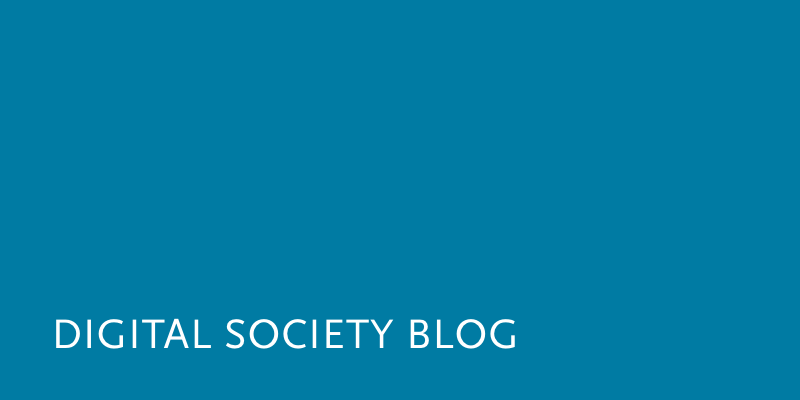Making sense of our connected world

Internet interconnection: networking in uncertain terrain
The internet today consists of more than 49,000 networks. Network interconnection is the internet’s central feature. Yet, there is little qualitative research on the junctions between networks – about why networks interconnect where they do, or about how network engineers create, maintain or shut down relationships with other networks. Given our current dependence on the internet, this lack of exploration comes as a surprise.
In theory, internet interconnection is very transparent: The protocols and standards governing the internet are open. Platforms such as RIPEstat allow even laypersons to inquire about connections between networks. Anybody can study the workings of the Border Gateway Protocol (BGP), which network engineers use to set the rules for how traffic flows between their network and the adjacent networks. There are a number of measurement tools in existence. However, quantitative measurements tell us little about the how and why of interconnection.
Lessons from empirical infrastructure research
Over the past few months, I have conducted close to 50 semi-structured interviews with network engineers, peering coordinators, internet exchange point operators and industry observers from more than 20 countries across the globe. This qualitative research has given rise to a number of findings that will hopefully contribute to a holistic understanding of internet interconnection – an understanding in which the mode of evaluation is not reduced to the price. Here, I wish to provisionally share two of the themes that have arisen in order to facilitate a discussion about the context in which internet interconnection takes place:
- The clarity of the internet’s design principles does not correspond to the fuzziness of network operation in practice. Internet connectivity is crafted by people.
- There is a mismatch between the simplicity of the internet’s architecture with regard to internet interconnection and the complexity of the economics that are enacted at the internet’s core.
Every network is different
Both the technical architecture and the standards of the internet are well documented. Harmonious infrastructure development has been fostered by international bodies like the Internet Engineering Task Force (IETF), the Internet Architecture Board (IAB) and also the Regional Internet Registries (RIRs). The fact that the concepts were so accessible has served the internet’s growth. Yet, no two networks are the same or, as one engineer put it:
“Every networker or architect adds his personal touch to his network. He has to stay within certain borders. But within the network, he is like … the god.”
When network engineers started building the internet, there were no textbooks to draw from, no rules about how to interact and no formal supervision. Thus, building networks and interconnecting meant learning by doing. To a notable extent, it still does, a point that most interviewees underlined. The decentralised, rhizomic evolution of the internet has led to an infrastructure in which globally communicated technical standards and best practices merge with individual preferences from the present and the past.
The differences in operation, and the friction these differences entail, become relevant when network actors depend upon each other. And this mutual dependence is necessary when actors create connectivity between their networks. So network actors such as internet service providers, content distribution networks and carriers have to cooperate to a certain extent on the operational level. In underlining this, I neither wish to suggest that they make gifts to each other, nor to ignore the sometimes fierce competition between them.
However, receiving connectivity comes at the price of entering a “shared-fate system”, as one interviewee called it. If one network messes with its configurations, other networks will be affected. Engineers try hard to mitigate such damages by creating alert systems or by applying so-called route filtering. But the internet is live; it is always on, and irregularities can and do happen at any time – 24 hours a day, 7 days a week, 365 days a year. Hidden from internet user’s eyes, traffic starts flowing in unforeseen ways, networks announce unusual routes, or ports between networks become congested.1 In such cases, engineers first try to identify the issue: Did a router collapse? Did environmental damages occur? Is there a big media event? Or is this due to another engineer’s “fat finger”? (Networkers jokingly refer to “fat fingering” when typos in code cause errors.) It is the network engineer’s job to make sense of the situation, determine to what extent it poses a problem and decide whether a solution is within her reach. I plan to explore these networkers’ solution strategies in more depth in future publications. But for now, one lesson from the above is that, as global as internet interconnection appears, problem solving happens in a micro-social context, and the details matter.
Internet interconnection – a transactionless economy
The second theme that arises refers to the tension between the internet’s architecture and the economic valuation of internet interconnection.
Internet interconnection typically is based on the Internet Protocol. This protocol encapsulates the data into datagrams and is responsible for routing these datagrams to their destinations. Since IP is a connectionless packet switching protocol, in theory every request is handled independently i.e. with no regard to prior or subsequent requests. Routers do not retain session information. In the dynamic routing environment of the internet, there is a chance that packets which belong to the same application process are routed to their destination on different paths through the network. Equipment can be set up to keep packets that belong to the same flow on the same path, but this is not necessarily so everywhere in the network. These characteristics of IP have been hailed because the overheads are low. But while this protocol may be regarded as beautiful from an engineering point of view, its creators did not design the protocol with economic valuation in mind.
The applicability of economic concepts to internet interconnection is not self-evident. What are the goods or services in this market for internet interconnection, if they even exist? How do network actors conceive of entities or transactions when they are faced with a stateless packet switching protocol? “We do not understand what a transaction is,” sighs one interviewee who has worked in the field for more than a quarter of a century.
Of course, network operators still engage in economic activities with each other. In fact, they master the elusiveness of the good quite routinely. So one may argue that pointing to uncertainty introduces an artificial problem to a functioning market. The benefit I see in this exercise is that it allows to de-naturalize dominant framings of interconnection economics as framings that are rooted in choice and conventions. From this point of view, the anchor points that network actors use for valuation do not emerge from the good itself, if that is ever possible. Instead, they may be regarded as crutches for valuation.
The “bit-miles” concept introduces bits as an economic entity. The “sending party pays” and the “costs-by-cause” principle both invoke directionality as a criterion, albeit with opposing poles. And notions of “latency”, peering “among equals” or references to the content that is being transmitted augment internet interconnection by drawing upon dynamic or even symbolic categories. The technological foundations of internet interconnection allow for such competing categories. Through this lense, peering conflicts appear not only as conflicts about prices but also about what are to be considered legitimate modes of evaluation.
Network operators are not the only ones who negotiate about what characteristics define a product. For some time, economic sociology has argued that so-called quality conventions form the backdrop for markets in general.2 However, both due to the internet’s immaterial character and to the way that internet interconnection works technically, the level of underlying uncertainty appears to be significant here.
The road ahead: rules and strategies
So how do the claims – that networks vary, that operators have limited control over their network’s fate and that the structure of internet interconnection challenges economic valuation – answer the question why and how networks interconnect? They constitute a first step in unboxing this technologically mediated market. Some of the uncertainties that network actors face at the core of the internet have become evident. The next step for research will be to explore the strategies, arrangements and rules used by network actors within what many refer to as a community.
1 Dyn Research’s “Internet Outages Bulletin” gives a good account of how often such irregularities happen.
Photo: “Internet map plain 1024“. Licensed under CC BY 2.5 via Wikipedia.
This post is part of a weekly series of articles by doctoral canditates of the Alexander von Humboldt Institute for Internet and Society. It does not necessarily represent the view of the Institute itself. For more information about the topics of these articles and asssociated research projects, please contact presse@hiig.de.
This post represents the view of the author and does not necessarily represent the view of the institute itself. For more information about the topics of these articles and associated research projects, please contact info@hiig.de.

You will receive our latest blog articles once a month in a newsletter.
Research issues in focus
Polished yet impersonal: The unintended consequences of writing your emails with AI
AI-written emails can save workers time and improve clarity – but are we losing connection, nuance, and communication skills in the process?
AI at the microphone: The voice of the future?
From synthesising voices and generating entire episodes, AI is transforming digital audio. Explore the opportunities and challenges of AI at the microphone.
Do Community Notes have a party preference?
This article explores whether Community Notes effectively combat disinformation or mirror political biases, analysing distribution and rating patterns.




